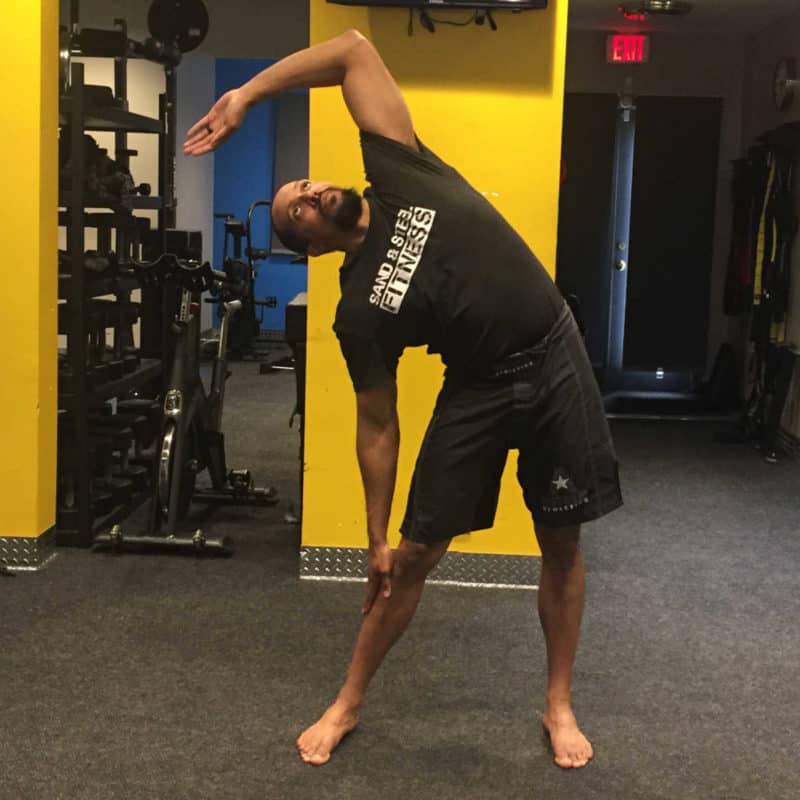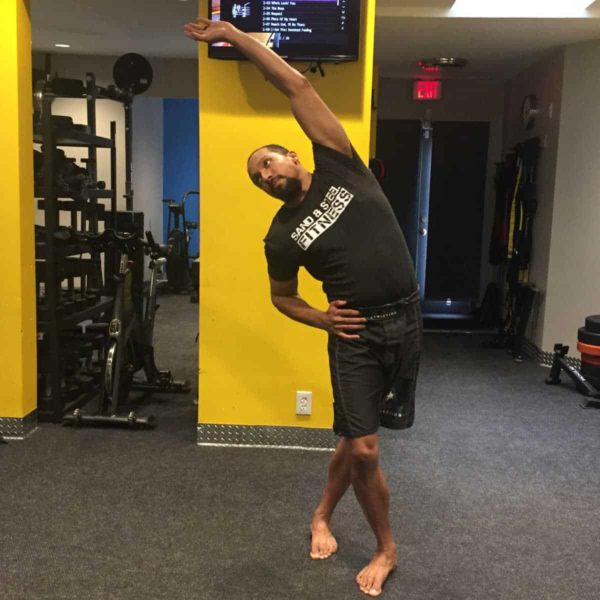Standing Yoga Poses Part 2
The Standing Yoga Poses from the Crescent family (indudalasana) may be used to mobilize the obliques and lats. Single leg variations are also useful for building balance. The asanas (poses) shown in this article help mobilize the spine both from a side bend and various extensions.
Hands Bound Rising Standing Locust PoseSwaying Palm Tree PoseOne Hand Side StretchCross Leg Dancer – Lasyasana
Hands Bound Rising Standing Locust Pose
Baddha Hasta Utthita Stiti Shalabhasana (Parshva = Side, Tada = mountain, asana = pose, urdhva = upward, baddha = bound, hasta = hand )(Baddha = Bound, Hasta = Hand, Utthita = extended, sitit = standing, shalabha = locust, asana = posture. This pose is a variation of Salabhasana in a standing position in Tadasana
Benefits: Combination Shoulder Opener and Back Extension Stretch. Very powerful in the bounded hands variation. Difficulty: 5/10
Swaying Palm Tree Pose
Tiryak Tala-Vrikshasana (tiryak = swaying, tala = palm, vriksha = tree, asana = posture)
Benefits: Easy and scalable stretch for obliques, latissimus dorsi (Lats), and quadradius labrum (lower back). Difficulty: 1/10
One Hand Side Stretch
Eka Hasta Parshvasana (eka = one, hasta = hand, parsva = side)
Benefits: Easy but effective side stretch for obliques. Difficulty: 1/10
Cross Leg Dancer
Benefits: Challenging pose in that works hip adduction and core extension at the same time. Difficulty: 5/10







